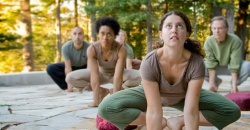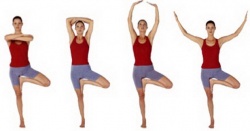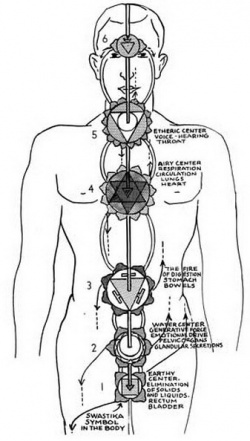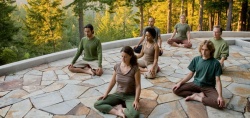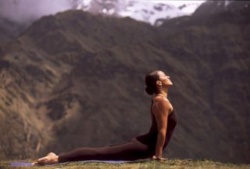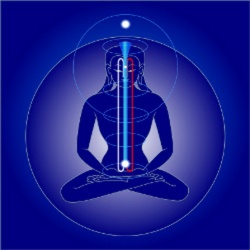Kum Nye
Kum Nye is the way to keep your energy safe. When you start to do a lot of exercise you will begin to lose energy through all of your pores. Therefore, doing powerful exercises may bring energy temporarily, but in the long-term it is possible to lose energy. Kum Nye helps you to retain the energy in the body. This also helps the inner channels so that energy, oxygen and breath flow very well and clearly in your body and mind. Kum Nye is also a way to open your chakras, your blocked points.
Kum Nye Tibetan Healing Massage has a very long Tradition in the Tibetan culture. The massage has a special benefit for people who practice meditation, for those who work very hard and intense and for all people who practice any kind of body training.
In our daily life we easily limit ourselves and focus so much on one way, so our body tension gets stuck and concentrate at one place. Our muscles tension is so high and very often we don’t rest enough or have sleeping disorders that involves a restless body and mind. The result is an unbalanced physical or mental state of our body energy.
Kum Nye Tibetan Healing Massage restores our energy and gives us power. It makes our energy flow very well and so balances our whole energy system. Then we can handle our usual life more easy and generally rest more easily.
Kum Nye Massage helps to relax all our muscles, releases all tension and tightness.
When the energy flow in your body the blood circulates very well, you have power and don’t get easily tired.
When your body is happy you possible experience happiness in every single moment.
Kum Nye Tibetan Healing Massage provides great benefits, it balances our energy.
Kum Nye Massage Technique comes originally from Tibetan monasteries. In the Vajrayana meditation tradition the body energy is highly needed in all practices. Kum Nye Healing Massage balances the body energy.
Kum Nye and sKu-mNyé are a wide variety of Tibetan religious and medical body practices. The two terms are different spellings in the Latin alphabet of the same Tibetan phrase (Wylie: sku mnye), which literally means "massage of the subtle body". Some systems of sku mnye are vaguely similar to Yoga, T'ai chi, Qigong, or therapeutic massage. "Kum Nye", Ku Nye, and Kunye are also used to transcribe the Tibetan phrases dku mnye ("belly massage") and bsku mnye ("oil massage"), which are pronounced identically to sku mnye. dKu mnye and bsku mnye manipulate the physical body, rather than the subtle (energetic) one.
Systems of Kum Nye are found in many Tibetan Buddhist and Bön traditions. These can be entirely different both in purpose and in methods. For instance, some forms are very slow moving; others are intensely aerobic. Some systems are based in the Tibetan Medical Tantras (scriptures), and are mainly therapeutic. Other systems are based in Dzogchen, and are mainly religious in purpose.
Three systems of sku mnye have been described and taught in detail in English. These are Tarthang Tulku's Kum Nye, the Aro gTér sKu-mNyé and the Bön system taught by Stephanie Wright. Systems of bsku mnye are taught by the International Academy for Traditional Tibetan Medicine and the Shang Shung Institute.
Tarthang Tulku's Kum Nye
Lama Tarthang Tulku first introduced Kum Nye into the West. He has written five books on the subject.
This system appears to be largely from the Medical Tantras, but includes exercises similar to those found in the Dzogchen series. It is based on very slow movements, stillness practices, and massage. This Kum Nye has been described as Inner Massage.
Exercises
To give an example, in the exercise called "flying" the practitioner extends their arms slowly out from the side up to stretching above the head and then slowly back down again. One cycle can take anywhere between 2 and 10 minutes. The practice of breathing in and out of both nose and mouth at the same time is recommended while doing the exercises. The key is to pay close attention to the subtleties of sensations and the quality of experience while doing the exercises, thus linking body and mind in the presence of awareness given to the sensations.
Aro gTér sKu-mNyé
This system is part of the Aro gTér, a Nyingma terma. It is described in detail in the book moving being, by Khandro Déchen.
Aro sKu-mNyé belongs to Longde, the section of Dzogchen concerned with the subtle body. As with all Dzogchen methods, its main goal is to realize rigpa, or non-dual awareness. This is described as "finding the presence of awareness in the dimension of sensation". Physical exercises are used to "shake" the tsa-lung system of energetic "channels", winds", and "essences". This perceptually disorients the practitioner, and produces "zap nyams". Zap nyams (Wylie: zab nyams), literally "profound experiences" in Tibetan, are described as "intense psychophysical sensations". These are said to occur in the energetic space that surrounds the body, rather than in the physical body.
Although the purpose of the Aro gTér sKu-mNyé is mainly religious, the system is said also to have a variety of mundane benefits, including more vivid sensory experience, emotional openness, enhanced meditation, physical fitness, and lessening of depression.
In practice, Aro sKu-mNyé is a set of 111 movement exercises divided into series that correspond to the Buddhist five elements. They range from simple and gentle to vigorous and extremely difficult, and bear no similarity to any other Eastern or Western form of exercise. The moving exercises are alternated with periods of motionless meditation.
Aro sKu-mNyé is taught by instructors certified by a board headed by the Aro Lamas.
Exercise example: "waking lion"
lie on your back / legs splayed as far apart as comfortable / arms 90 degrees to your body / palms upwards / eyes closed / simultaneously (with a quick movement) raise your torso and legs (legs straight and locked at the knee) / simultaneously clap feet together and hands together (arms are straight and locked at the elbow) / in the moment of clapping, open eyes wide and shout Ra! (roll the 'R' to enunciate fiercely) / when clapping feet and hands, eyes, hands, and feet should be at the same height – feet and hands meet at the same level as your eyes; and at this point your bottom is all that is touching the floor / it is important that the back is kept absolutely straight / try to achieve an angle of 45 degrees to the floor, but NOT by bending your back – bending the back will result in injury! / relax back into the starting position and repeat.
Bön system
This section may require cleanup to meet Wikipedia's quality standards. (August 2009)
Another example of Kum Nye used for energy throughout the day can be found in the book Waking up for beginners ] which takes the reader through 8 poses to each be held for up to 2 minutes. While some poses are simple, others take years of practise to get right. This particular book was inspired by the teachings of Christopher Hansard who taught this form to the book's author, Stephanie Wright. Many practitioners approve Kum Nye as a well balanced workout for the body enhancing suppleness and strength. Just as the Tibetan Warriors once performed this routine in a prescribed order on waking, so must one practise it today to reap the benefits. This form is known to be so potent, that one is discouraged from practising it too late in the day as the energy created may make for a somewhat restive sleep.
IATTM Ku Nye
The Ku Nye taught by the International Academy for Traditional Tibetan Medicine is a system of therapeutic oil massage. It is based in the Medical Tantras. Its benefits are said to include elimination of toxins, increased vitality, pain reduction, and calming of nervous disorders including insomnia, depression and anxiety.
Shang Shung Institute Kunye
The Shang Shung Institute, affiliated with Chogyal Namkhai Norbu, offers a Training program in Kunye Massage.
Karuna
The Karuna Institute offers regular Kum Nye meditation retreats.
